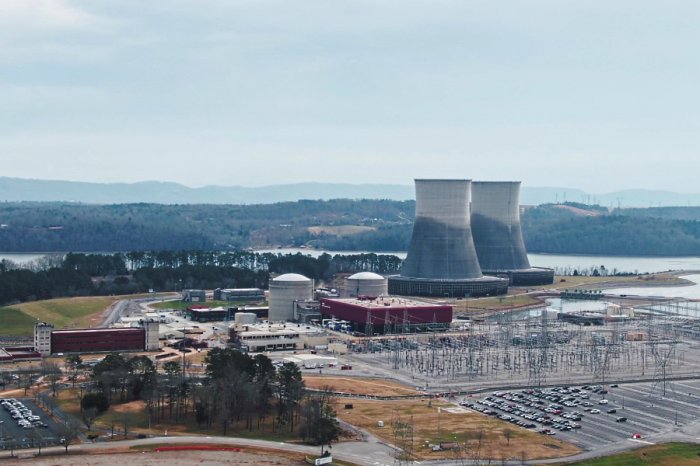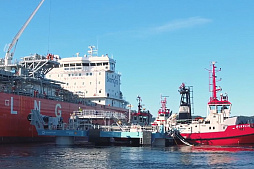After receiving the necessary documents and project presentation, our team will try to review your request as soon as possible, and leading experts will offer the best options for project funding.
The construction of an oil refinery is a complex and extensive process that requires advanced technology, skilled labor, and significant financial resources.
Advanced project finance tools, loans from private investment funds, leasing and other financial mechanisms help to attract long-term capital necessary for the development of such projects around the world.
GCAM Investment Group can provide your business with affordable funds and provide detailed advice regarding the construction cost of oil refineries.
Basic factors affecting the construction cost of oil refineries
The construction cost of an oil refinery depends on various factors such as the facility location, size, complexity, and technology used.Additionally, government regulations, environmental standards, and labor costs also play a significant role in determining the overall cost. Furthermore, the availability and price of materials and equipment also affect the construction cost.
Firstly, facility location plays a vital role in determining the cost of constructing an oil refinery. The investment cost could vary depending on whether it's built in an urban or rural area. Urban areas usually require expensive land acquisition and higher labor costs, while rural areas may require more significant investment in infrastructure, transportation, and logistics. For example, the construction cost of the Jamnagar refinery complex in Gujarat (India) was about $6 billion due to its location, being one of the largest and most sophisticated refineries globally.
Secondly, the size and technical complexity of the refinery also influence the total construction cost. More complex refineries require specialized equipment, technology, and skilled labor, leading to a higher cost. For example, the construction cost of the Mina Al-Ahmadi Refinery in Kuwait, one of the largest in the world, was over $5 billion due to its huge size and expensive technologies.
Thirdly, government regulations and environmental standards can also impact the construction cost. Compliance with environmental standards requires costly equipment and technology to ensure the safety of the workforce and the environment. For instance, the construction cost of the BP Whiting Refinery in the United States was extremely high due to stringent US government regulations stipulating a low sulfur fuel production.
Constructing an oil refinery is a complex task that requires significant financial resources due to several factors.
Location, size, technology used, government regulations, environmental standards, labor, and material availability are factors that play a vital role in determining the construction cost. To construct an oil refinery cost-effectively, companies must ensure that they conduct extensive research and consider all the factors that could impact the cost.
However, it's worth the investment efforts since oil refineries still play a critical role in the global economy and energy sector.
Sources of financing for the construction of refineries
Oil refinery construction is an ambitious undertaking that requires a substantial amount of capital investment.The construction and establishment of oil refineries require adequate financing sources to ensure the success of the investment project. Our financial experts can advise you in detail on the most suitable financial sources used in the construction of oil refineries.
Financing sources used in the construction of large oil refineries vary from equity financing, debt financing, and government financing.
Equity financing involves creating an investor pool and selling part of the ownership of the refinery to them. Debt financing involves obtaining large long-term loans from financial institutions or issuing bonds.
Government financing involves obtaining funds from government grants or concessional loans issued by state-owned banks.
Equity financing is a common financing source used in the construction of oil refineries. Equity financing involves selling ownership of a refinery to potential investors. The investors become shareholders in the refinery. The risk and returns are shared among the shareholders.
Advantages of equity financing include avoiding the risk of defaulting on loans, the absence of repayment obligations, and the equity financing investment may result in significant returns. An example of an equity financing firm that has invested in an oil refinery is private equity firm Carlyle Group. The firm invested $175 million in Philadelphia Energy Solutions in 2012, a sprawling refinery complex.
Debt financing is another financing source used in the construction of oil refineries. This type of financing sources involves obtaining a loan from financial institutions or issuing bonds. The loan amount must be paid back with interest.
Flexible loans provided by large private investors or investment funds can be a valuable alternative to traditional cooperation with commercial banks. Debt financing benefits include obtaining large sums of money and gaining tax advantages. One example of debt financing is when large long-term funding is sourced from banks to build oil refineries.
An example is the €2.2 billion loan given by UniCredit and a pool of 24 other banks to Russia's Lukoil in 2018.
Government financing is a third source of financing for oil refineries. Concessional loans from state-owned banks or grants from the government can be obtained. Depletion allowances and tax deductions may also be given as part of the financing.
The advantages of government financing is that it supports the stabilization of the local economy and job creation. A considerable example of government financing is the China-Pakistan Economic Corridor, which is building the Gwadar Oil Refinery. It was funded with a $6.6 billion loan from China's Exim Bank in 2018.
In conclusion, financing sources for oil refinery construction vary as shown in the examples above. Equity financing, debt financing, and government financing are not exhaustive, but they are among the most common methods used to finance oil refinery construction. Investors need to evaluate the risks and benefits of each financing source before undertaking any investments to fund oil refineries.
Therefore, the choice of financing method must be done with care and caution to ensure that the success of the investment project is guaranteed.
Investments in oil refineries in most countries are growing
Oil is one of the most sought-after natural resources in the world.It is an important source of energy that fuels different sectors of the economy, including transportation, agriculture, manufacturing, and many more.
As a result, most countries with oil reserves often invest in oil refinery construction to refine crude oil for various applications. Many countries have invested heavily in oil refinery construction, which helps to boost the economy.

This list includes such giants of the world petrochemical industry as the USA, China, UAE, Russia, India and a number of other countries.
The United States is currently one of the leading countries in oil refinery construction and investments. In 2019, there were 137 operable refineries in the country, with a total refining capacity of 18.8 million barrels per day (bpd). This represents about 20% of the total global refining capacity. Texas is the leading state in oil refinery construction in the US, with the largest refining capacity of approximately 5.8 million bpd.
California and Louisiana follow closely, with refining capacities of 2.1 million bpd and 3.2 million bpd, respectively. The United States intends to increase investment in the petrochemical industry, which continues to play a role as one of the leading drivers of the economy.
Russia is another country that invests heavily in oil refinery construction.
As of 2020, the country has a refining capacity of 6.1 million bpd, making it the second-largest oil refiner in the world. The country has 40 oil refineries, with the majority of them located in West Siberia, the Volga region, and the Far East. The refining industry is a significant contributor to the Russian economy.
Before the start of the war in Europe, Russia was one of the most promising countries for investment in the construction of refineries and oil and gas infrastructure, but now tough sanctions and international isolation have put an end to business development for an indefinite period.
China is the world's largest importer of crude oil, and as such, it has invested significantly in oil refinery construction. The country's refining capacity was 17.5 million bpd in 2021, and it plans to increase its refining capacity to 20 million bpd by 2025. China's largest oil refineries are located in Shandong, Guangdong, and Zhejiang provinces, and these refineries account for about 40% of the country's refining capacity.
The potential of this country in the petrochemical industry significantly exceeds the potential of other Asian countries, and has clear prospects for further growth.
The demand for oil-related products, including fuel and petrochemicals, is increasing steadily as the world's population grows. Several countries are investing in oil refinery projects to keep up with the growing demand. The construction of these refineries requires massive investments to ensure they are built to meet the highest economic, technical, environmental and safety standards.
Oil refinery projects require massive investments to construct and operate, making them a costly undertaking. However, these projects play an essential role in providing petroleum-based products to business and society.
The construction of large refineries usually costs billions of dollars and can take several years to complete.
On average, we are talking about 4-5 years of investment project development from the stage of drawings to commissioning.
One example of a massive oil refinery project is the previously mentioned Jamnagar Refinery in India. This facility is currently the world's largest, with a capacity of over 1.2 million barrels per day. Its construction began in 1997, and the refinery was commissioned in 1999. The investment project's cost was around $6 billion. The refinery has played a significant role in meeting India's growing demand for petroleum-based products.
Another large-scale project is the Jubail II in Saudi Arabia. This refinery has a capacity of 1.2 million barrels per day and is considered one of the largest petrochemical complexes globally. The project's cost was around $10 billion, and it was completed in 2016.
The refinery is a significant contributor to Saudi Arabia's economy and provides employment for thousands of people.
Similarly, the Fujairah Refinery in the UAE is a massive oil refinery project which began to ramp up the production of petrochemical products in 2021. The facility will have a capacity of 600,000 barrels per day and will cost approximately $3.3 billion. The refinery will help meet the UAE's growing demand for petroleum products and will contribute to the country's economic growth.
If you are looking for long-term financing for the construction of refineries, labor pipelines, oil terminals and other related infrastructure, please contact GCAM Investment Group.
Our international team is ready to provide you with access to project finance, flexible and large loans, leasing schemes and other mechanisms.
In addition, our experts provide comprehensive consulting and financial engineering services.
Contact our representative for details.























